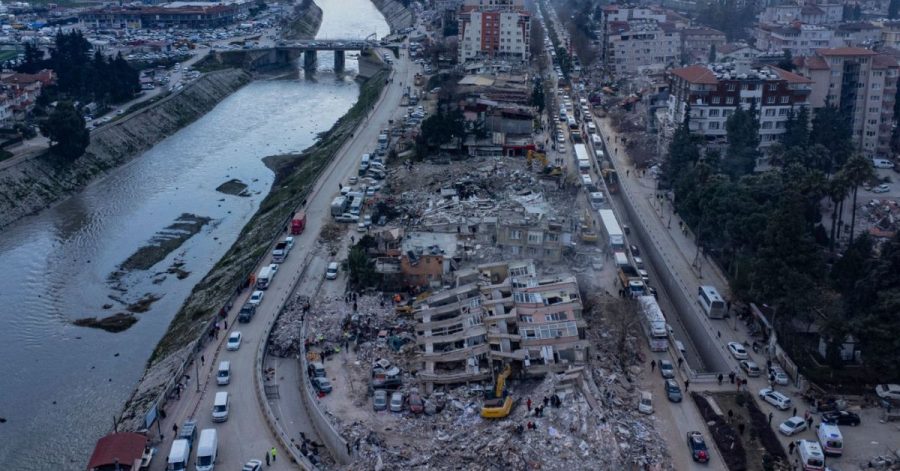The ground beneath our feet is constantly shifting and moving, with the power to cause destruction and chaos in the form of earthquakes. Despite advancements in technology, the recent earthquake in Turkey and Syria that left a wave of devastation across these countries and resulted in more than 46,000deaths and 2.5 million displaced people shows that predicting when and where earthquakes will occur still remains a challenge.
However, in recent years, a new form of technology has emerged, one that aims to mitigate the consequences of these natural disasters: earthquake prevention technology. From early warning systems to smart infrastructure, these technologies are helping communities better prepare for the inevitable shaking of the earth and minimize the damage caused by these earthquakes.
Drones and satellites are also being deployed to aid relief efforts. In Southern Turkey, domestic drone magnate Bayraktar deployed more than 30 Bayraktar Akıncı and Bayraktar TB2 unmanned combat drones in aiding earthquake relief efforts.
“The drones have been instrumental in providing continuous updates and data to the crisis response team for damage detection, search and rescue support, along with coordination activities. In addition, three Bayraktar TB2 UAVs equipped with the Baykar Rapid Mapping Pod have started capturing high-resolution aerial images for damage assessment in the affected areas,” the company said in a statement.
When it comes to prevention tech, solutions for earthquakes can be divided into several categories such as early warning systems and smart infrastructure.
Seismic monitoring networks and early warning systems
These are networks of sensors placed underground and on the surface to detect seismic activity. When an earthquake is detected, an early warning can be sent to alert people and systems to take necessary actions.
Israeli startup SeismicAI is one of the companies developing such solutions. Their solution includes setting up a complex grid of high-power sensors deployed over verified faults that allow for seismic detection close to the source, and from there the system relays the information as an alert to mobile apps and evacuation sirens or as instructions to automation systems.
Additionally, such systems can be used for other practical uses in the aftermath of a natural disaster, experts explain.
“Early-warning is used successfully for automatic shutdown of gas supply to buildings, to park moving elevators at the nearest floor and open the doors, to automatically open garage doors in fire station buildings, and so on,” Sofia-based civil engineer Anton Andonov tells The Recursive.
Mobile app alerts and disaster analytics software
There are mobile apps that use seismic monitoring data to provide users with real-time alerts when an earthquake is detected in their area.
Disaster analytics software can be used to help warn people about the magnitude of the effects of such natural disasters. For example, US-based startup Safehub uses IoT sensors, data and analytics to deliver real-time, building-specific earthquake damage information. The platform then analyzes the data and deploys alerts through a web-based dashboard, text messages, and emails.
According to experts, there is great potential in these solutions and in earthquake prevention technology, especially when it comes to reducing the damage that is caused by such natural disasters.
“Few organizations developed open-source risk analysis software. The most widely used is OpenQuake from GEM. There is another one called CAPRA that is multi-hazard. Both are used in the (re)insurance sectors and for disaster risk management. The main difference is that in the insurance sector they calculate only financial losses, while in disaster risk management we also look at damage in buildings, trapped people, injured, casualties, people that need shelter, and so on” Andonov adds.
Smart infrastructure
Earthquake-resistant buildings
These are buildings that are designed and constructed with the latest seismic technologies. They can withstand the forces of earthquakes and reduce damage and collapse.
Automated shut-off systems
These systems automatically shut off gas and water lines when an earthquake is detected to prevent fires and leaks.
Smart bridges and roadways
Bridges and roadways equipped with sensors can detect and respond to the shaking caused by earthquakes, reducing damage and ensuring continued functionality.
While no prevention technology is foolproof, and earthquakes will always present a risk, such solutions demonstrate the potential for effective risk reduction and improved resilience in earthquake-prone regions. By investing in earthquake prevention technology, governments and communities can take a proactive approach to earthquake risk reduction, potentially saving lives and reducing the costs associated with recovery and reconstruction efforts.








